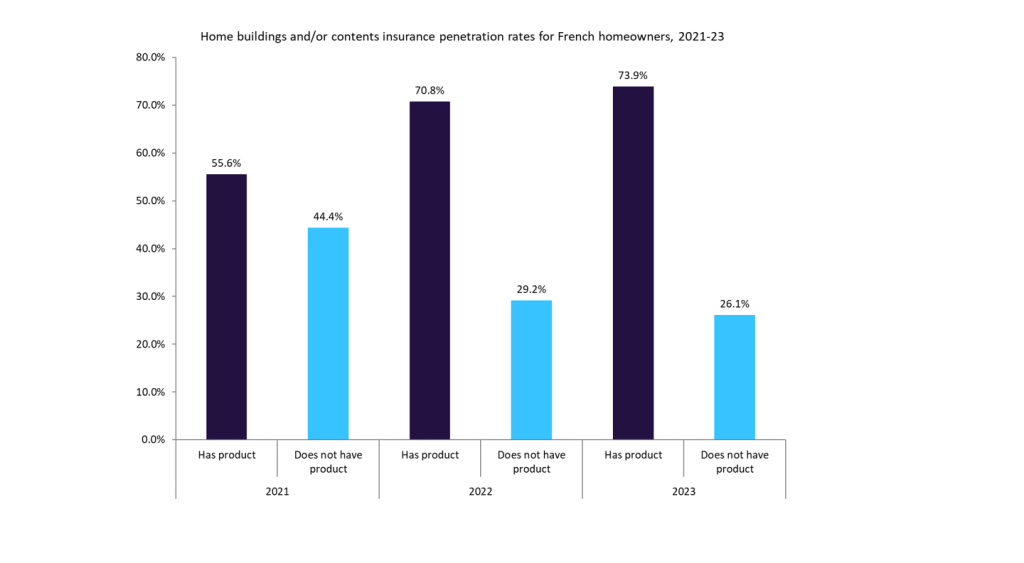Life insurers in France
face a stiff test in the current financial climate with net
outflows, consumers’ strained personal finances and political
interference challenging their business models.
One obstacle for the
market is that bancassurers in France are currently concentrating
on offering savings over life products.
Furthermore, it appears
that the French population is looking less to the state for
support.
Instead, more aware
consumers are investing in old age provision such as pensions and
nursing care.
According to a report
issued by rating agency Moody’s Investors Service in early June,
the French life sector saw net outflows of €2.1bn ($2.6bn) in the
first four months of 2012, which it attributes to five key
factors.
Bank
competition
How well do you really know your competitors?
Access the most comprehensive Company Profiles on the market, powered by GlobalData. Save hours of research. Gain competitive edge.

Thank you!
Your download email will arrive shortly
Not ready to buy yet? Download a free sample
We are confident about the unique quality of our Company Profiles. However, we want you to make the most beneficial decision for your business, so we offer a free sample that you can download by submitting the below form
By GlobalDataFirstly, there is a high
level of competition with banks, resulting from low interest rates,
making life insurance products unattractive.
In addition, says
Benjamin Serra, assistant vice-president and insurance analyst at
Moody’s, banks involved in bancassurance need liquidity, and so are
promoting more bank products than life insurance products, leading
to fewer new policies being written.
Secondly, the economic
crisis has led to strained personal finances, with individuals
spending more income on their immediate needs.
Serra says that life
insurance is one of the first investments to go as it is
non-compulsory, and motor insurance or home insurance – mandatory
if you are renting a property – becomes a priority.
An ageing population
provides another challenge, as it starts drawing on investments to
fund immediate retirement needs.
Olivier Mariée, AXA
France’s executive vice-president in charge of saving, says a lot
of life insurance was written in the 1980s and 90s, for people now
reaching retirement age. Mariée says the maturity of these books is
between 10 and 15 years, and after a period of eight years they are
subject to lower tax so people can get their cash back.
He explains that with
some of these customers now retiring, they need their cash in order
to live.
There is also a worry
surrounding the recent election results, with president François
Hollande promising to align the tax rate on savings with that of
revenues, which would imply an important reform of tax rules on
savings, including tax rules on life insurance policies.
Eurozone
crisis
Finally there is still
the spectre of the eurozone crisis lurking in policyholders’ minds,
which appears to make them wary of investing in life
insurance.
Money has been flowing
consistently from French life insurers since September 2011,
however Moody’s is quick to point out that the net outflow is still
relatively small, only 0.1% of French life insurance liabilities,
and on an annualised basis, that would only represent 0.6% of
liabilities.
Although policyholders
are looking to remove money from life insurance, other resurgent
products are helping to stem the flow.
Faced with an ageing
population, the French public are starting to realise that the
state may not support them through old age, and are planning
accordingly.
Mariée contrasts the UK
market, where he feels people have long been aware of planning for
retirement.
He says, “In the past
the French customer thought that everything would be managed by the
government and social security, but now the customers understand
that this is a risk and this is something they will have to manage
for themselves.”
People are starting to
look at pensions, more healthcare provision, and nursing
care.
“Nursing care was a
business that was flat for the last 10 years and now it’s growing
very, very fast,” says Mariée.
Serra says that high
taxes had stifled the promotion of health products, and long term
care products would require new legislation that has been
repeatedly postponed.
Solvency II
execution
Another challenge is the
impending implementation of the Solvency II regime, although the
outlook appears positive.
Mariée says: “I think
what is clear is that the French insurers very much anticipated
Solvency II. At AXA in France we have been working hard to prepare
and anticipate, in developing our internal model and so
on.”
Serra also believes that
the largest French insurers are prepared for Solvency II, but he
has some trepidation about the one-size-fits all nature of the
regulatory regime.
For example, he says
legislation should recognise the relatively low risk profile of the
French life sector with lower guarantees than in many other
European markets and “the good asset management” on
average.
Overall, Moody’s says
the main liquidity risks for the French life industry would be a
crisis of confidence with respect to one or several
players.
Therefore, if insurers’
capital levels fall materially and face regulatory intervention,
the rating agency says this would create reputational issues for
all, and could provoke a surrender shock.
Mariée highlights the
effect that increased perception of risk has had among consumers,
creating uncertainty for investors who have then switched to real
estate or banking products.
However, with the
renewed interest in pensions and care, he believes it is still an
“attractive market with plenty of big opportunities”.







